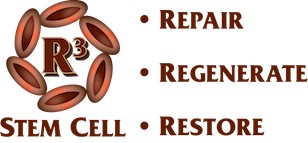FAQs on Endometriosis
Endometriosis is a common gynecological condition. The name is derived from “endometrium,” which is the tissue that lines the uterus. During a regular menstrual cycle, the endometrial tissue builds up inside the uterus and sheds if pregnancy does not occur. Women with endometriosis develop endometrial tissue outside the uterus. Every month, hormonal changes cause a building up and breaking down of the endometrium, which leads to pain and cramping.
How many people are affected by endometriosis?
In the United States, endometriosis affects around 5% of women of childbearing age. Women with endometriosis complain of unbearable cramps and irregular menses. Endometriosis can occur in the ovaries, fallopian tubes, uterosacral ligaments, space between the rectum and uterus, the lining of the pelvic cavity, and the outer surface of the uterus.
What causes endometriosis?
The exact cause of endometriosis is not known. Experts believe that the endometrial tissue forms outside the uterus before the child is born. In addition, one theory suggests that the tissue backs up through the fallopian tubes into the abdomen during menstruation, and the tissue attaches and grows to other body regions.
What are the risk factors for endometriosis?
Any woman can develop endometriosis; however, certain people are at increased risk for the condition. Those at increased risk include:
- White women
- Women who have a first-degree relative with the disease (mother, daughter, sister)
- Women who give birth for the first time after age 30 years
- Women with an abnormal uterus
What are the symptoms of endometriosis?
The symptoms of endometriosis include:
- Infertility
- Abnormal or heavy menstrual flow
- Pain during intercourse
- Pain and menstrual cramps felt in the lower back and abdomen
- Painful urination
- Pain with bowel movements
Does endometriosis cause infertility?
Endometriosis is one of the major causes of female infertility. Approximately 35% of women who have infertility also have endometriosis, according to the American Society for Reproductive Medicine.
Are there different stages of endometriosis?
The classification of endometriosis developed by the American Society for Reproductive Medicine shows the stages as:
- Stage 1 – Minimal
- Stage 2 – Mild
- Stage 3 – Moderate
- Stage 4 – Severe
Staging of endometriosis is based on the amount, location, size, and depth of the endometrial tissue.
What are the treatment options for people with endometriosis?
Treatment for endometriosis may include:
- Medications – Nonsteroidal anti-inflammatory drugs (NSAIDs), such as ibuprofen and naproxen.
- Hormonal therapy – Drugs used include combined estrogen and progestin hormones, which prevent ovulation and reduce menstrual flow, danazol (synthetic testosterone), and gonadotropin-releasing hormone agonist (stops ovarian hormone production).
- Surgeries – The techniques used include a laparotomy to remove the displaced endometrial tissue, and a hysterectomy to remove the uterus and ovaries.
Does stem cell therapy help with endometriosis?
In a recent clinical study, stem cells were used to treat stress urinary incontinence. Researchers reviewed numerous studies. They found that stem cell therapy was effective and safe short-term for the treatment of the perineal region and numerous conditions. Another study assessed mesenchymal stem cells injections for the pain associate with arthritis. Researchers found that it decreased pain and improve physical function.
Resources
Aref-Adib M, Lamb BW, Lee HB, Akinnawo E, Raza MM, Hughes A, Mehta VS, Odonde RI, Yoong W. Stem cell therapy for stress urinary incontinence: a systematic review in human subjects. Archives of Gynecology and Obstetrics 2013; 288(6): 1213-1221.
Xia P, Wang X, Lin Q, & Li X (2015). Efficacy of mesenchymal stem cells injection for the management of knee osteoarthritis: a systematic review and meta-analysis. Internat Orthoped, 39(12), 2363-2372.

